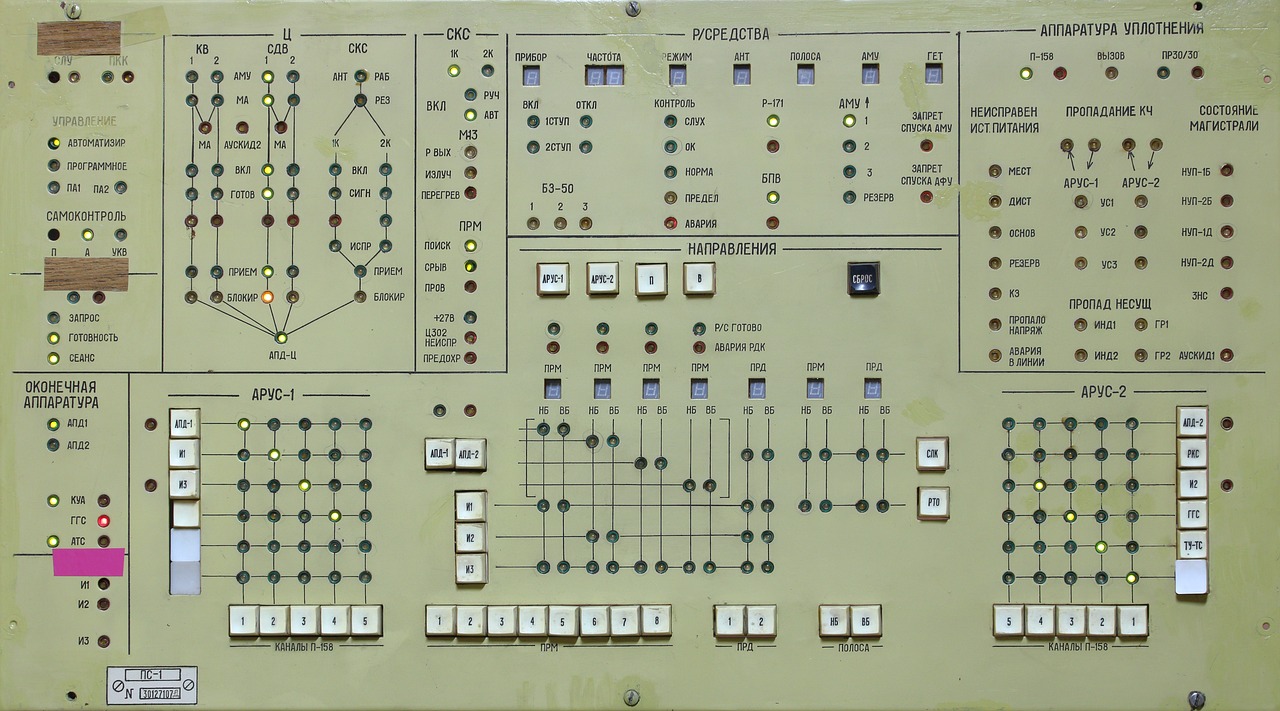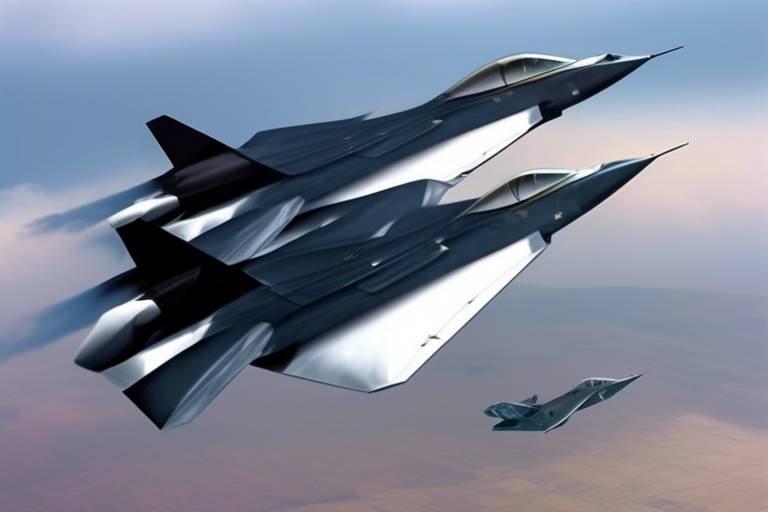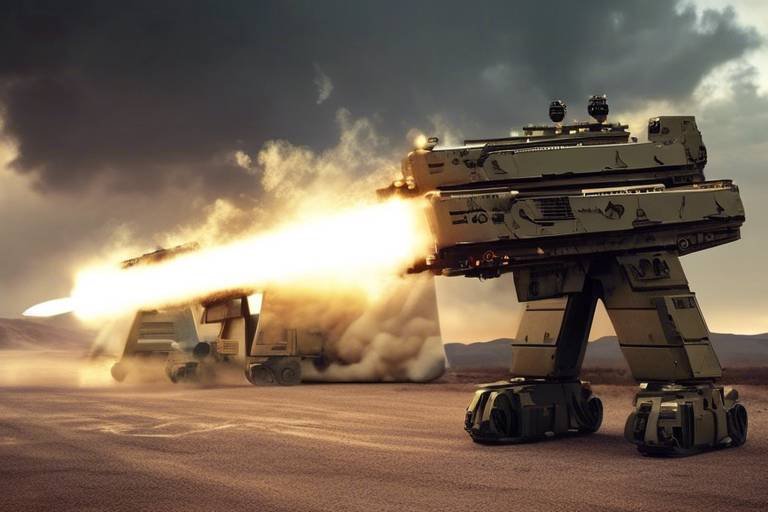Autonomous Combat Ships - The Future of Naval Warfare
As we sail into the uncharted waters of the 21st century, the landscape of naval warfare is undergoing a seismic shift. The advent of autonomous combat ships is not just a technological marvel; it's a revolution that could redefine how nations engage in maritime conflicts. Imagine a fleet of ships that can operate without human intervention, making split-second decisions based on complex algorithms and real-time data. This isn't the stuff of science fiction; it's happening now, and the implications are profound.
Autonomous combat ships are designed to be the ultimate game-changers in naval warfare. They promise enhanced operational efficiency, reduced risk to human life, and the ability to execute complex missions in hostile environments. But what does this mean for traditional naval forces? Are we witnessing the dawn of a new era where machines take the helm, or is this merely an evolution of existing technologies? As we dive deeper into this topic, we will explore the rich history of naval warfare, the cutting-edge technologies that power these ships, and the strategic advantages they offer.
Moreover, the challenges of integrating autonomous combat ships into existing fleets cannot be overlooked. Issues ranging from technical limitations to ethical dilemmas pose significant hurdles. How do we ensure that these vessels operate within legal and moral boundaries? And as different countries adopt varying approaches to this technology, the global landscape of naval warfare is becoming increasingly complex. By examining current developments and future predictions, we can better understand the potential of autonomous combat ships and their role in shaping the future of naval engagements.
Understanding how naval warfare has transformed over the centuries sets the stage for the introduction of autonomous combat ships and their potential impact on future maritime conflicts. From the age of sail to the era of steam, and now to the digital age, each phase brought about innovations that changed the rules of engagement. Today, we find ourselves on the brink of another major leap, one that could see ships operating independently, making tactical decisions without human oversight.
This section delves into the cutting-edge technologies, including AI, sensors, and robotics, that enable autonomous combat ships to operate effectively in diverse maritime environments. These ships are equipped with advanced navigation systems, sophisticated communication networks, and artificial intelligence algorithms that allow them to analyze vast amounts of data and respond to threats in real time.
Autonomous combat ships offer various strategic benefits, such as enhanced operational efficiency, reduced human risk, and improved decision-making capabilities, which can significantly alter naval engagement strategies. By taking humans out of the equation, these vessels can operate in high-risk areas without endangering lives, allowing for more aggressive tactics and longer missions.
Despite their potential, autonomous combat ships face numerous challenges, including technical limitations, regulatory hurdles, and ethical concerns that must be addressed for successful integration into naval fleets. The technology is still evolving, and ensuring reliability in unpredictable maritime conditions is a significant concern.
Examining current projects and prototypes of autonomous combat ships provides insight into how militaries are approaching this technology and the lessons learned from early implementations. Countries like the United States and China are investing heavily in this field, testing various models that could soon be deployed in real-world scenarios.
Different countries are adopting varying approaches to autonomous combat ships, reflecting their strategic priorities, technological capabilities, and ethical considerations in the realm of naval warfare. Some nations are racing to develop these technologies, while others are more cautious, advocating for regulations and oversight.
This section explores potential future scenarios involving autonomous combat ships, including their role in conflict, deterrence strategies, and the transformation of naval power dynamics. Will we see fleets of autonomous vessels patrolling international waters, or will their use be limited to specific missions? The answers remain uncertain, but the possibilities are intriguing.
As autonomous combat ships become more prevalent, ethical considerations and regulatory frameworks will be crucial in guiding their development and deployment, ensuring responsible use in warfare. Questions about accountability, decision-making in combat situations, and the potential for unintended consequences must be addressed to prevent misuse of this powerful technology.
- What are autonomous combat ships? Autonomous combat ships are naval vessels that can operate without human intervention, using advanced technologies like AI and robotics.
- What are the benefits of using autonomous ships in naval warfare? They offer enhanced operational efficiency, reduced risk to human life, and improved decision-making capabilities.
- What challenges do autonomous combat ships face? Challenges include technical limitations, regulatory hurdles, and ethical concerns regarding their use in warfare.
- How are different countries approaching autonomous combat ships? Countries are adopting varied strategies based on their technological capabilities and ethical considerations.
- What are the ethical concerns surrounding autonomous combat ships? Key concerns include accountability for decisions made by machines and the potential for unintended consequences in warfare.

The Evolution of Naval Warfare
Naval warfare has undergone a remarkable transformation over the centuries, evolving from simple wooden ships powered by sails to the complex, technology-driven vessels we see today. This evolution is not just a tale of technological advancement; it reflects the changing nature of warfare itself, influenced by political, social, and economic factors. In ancient times, naval battles were often fought with oars and sails, where the might of a fleet was determined by the size and skill of its crews. Think of it as a game of chess on water, where strategy and manpower were the keys to victory.
As we moved into the age of exploration, naval power became synonymous with national strength. Countries like Spain and England built vast fleets to protect their trade routes and colonies, leading to conflicts that would shape the world. The introduction of cannons and gunpowder marked a significant turning point, allowing ships to engage enemies from a distance. Imagine the thunderous roar of cannon fire echoing across the waves, a precursor to the modern naval engagements we see today.
The Industrial Revolution brought about another seismic shift, introducing ironclad ships and steam power. This era saw the emergence of battleships that could withstand enemy fire and deliver devastating blows in return. The famous Battle of Tsushima in 1905 showcased the power of modern naval tactics, where the Japanese fleet decisively defeated the Russian navy, altering the balance of power in East Asia. It was a clear demonstration that naval supremacy could dictate the course of history.
Fast forward to the 20th century, the world witnessed the advent of aircraft carriers and submarines, which revolutionized naval warfare once again. Aircraft carriers became floating air bases, projecting power across oceans, while submarines introduced stealth and surprise into naval engagements. The sinking of the British battleship HMS Hood by the German battleship Bismarck in 1941 highlighted the vulnerabilities of even the mightiest ships, paving the way for a new era of warfare where technology and tactics were constantly evolving.
Today, we stand on the brink of yet another transformation with the introduction of autonomous combat ships. These vessels represent the culmination of centuries of naval innovation, utilizing advanced technologies like artificial intelligence, robotics, and sophisticated sensors. They are designed to operate without direct human intervention, offering a glimpse into the future of naval warfare where machines could play a pivotal role in combat scenarios. Imagine fleets of unmanned ships patrolling the seas, capable of making split-second decisions, all while minimizing the risk to human life.
The implications of this evolution are profound. As we embrace autonomous systems, we must also consider the strategic advantages they bring, such as enhanced operational efficiency and improved decision-making capabilities. However, this shift also presents challenges that militaries around the world must navigate, including ethical concerns and the need for regulatory frameworks to govern their use. The evolution of naval warfare is not just about technology; it's about understanding the responsibilities that come with it.
In summary, the journey of naval warfare from ancient galleys to autonomous combat ships illustrates a fascinating narrative of human ingenuity and adaptation. Each era has brought with it new challenges and opportunities, shaping the way nations interact on the global stage. As we look to the future, it is essential to reflect on this evolution, ensuring that we harness the power of technology responsibly and strategically.
- What are autonomous combat ships? Autonomous combat ships are naval vessels that operate without direct human control, utilizing advanced technologies to navigate and engage in combat scenarios.
- How have naval warfare strategies changed over time? Naval warfare strategies have evolved from manpower-based tactics to technology-driven approaches, incorporating innovations like steam power, aircraft carriers, and now autonomous systems.
- What are the ethical concerns surrounding autonomous combat ships? Ethical concerns include the potential for machines to make life-and-death decisions, accountability in warfare, and the implications of reducing human presence in combat.
- What role do autonomous ships play in modern military strategy? Autonomous ships enhance operational efficiency, reduce risks to human life, and provide new capabilities in surveillance and combat, influencing modern military strategies.

Technology Behind Autonomous Ships
The rise of autonomous combat ships is not just a fleeting trend; it represents a significant leap forward in naval technology. At the heart of these vessels lies a complex interplay of several cutting-edge technologies that enable them to navigate the seas without human intervention. Imagine a ship that can think, analyze, and make decisions in real-time—this is the future we are heading towards.
One of the most critical components of autonomous ships is artificial intelligence (AI). AI algorithms allow these vessels to process vast amounts of data from their surroundings, making them capable of identifying threats, navigating through challenging waters, and even communicating with other ships. This capability is akin to giving a ship a brain, enabling it to learn from its experiences and adapt to new situations. For example, AI can analyze weather patterns, sea conditions, and other environmental factors to optimize the ship's route and operational efficiency.
Complementing AI are sensors and robotics. These ships are equipped with a myriad of sensors, including radar, sonar, and cameras, that provide real-time information about their environment. Imagine a ship equipped with eyes and ears that can see and hear everything around it; this is the level of situational awareness that autonomous combat ships possess. The data collected by these sensors is processed by AI systems, which then make informed decisions about the ship's actions.
Moreover, robotics plays a vital role in the operation of autonomous ships. From automated navigation systems to robotic arms capable of performing maintenance tasks, these technologies enhance the ship's operational capabilities. For instance, a robotic arm can repair damage or handle cargo without putting human crew members at risk, significantly reducing the potential for casualties in hostile environments.
Another fascinating aspect of autonomous ships is their ability to operate in swarm technology. This concept involves multiple autonomous vessels working together as a coordinated unit, much like a flock of birds. By sharing information and strategizing collectively, these ships can cover larger areas and respond more effectively to threats. Imagine a fleet of autonomous ships communicating seamlessly, executing complex maneuvers that would be impossible for human crews alone. This capability not only enhances operational efficiency but also creates a formidable presence in maritime conflicts.
However, the integration of these technologies is not without its challenges. As we push the boundaries of what is possible, we must also consider the implications of relying on machines for critical decision-making in warfare. It raises questions about accountability, reliability, and the potential for malfunctions in high-stakes situations. Therefore, while the technology behind autonomous combat ships is groundbreaking, it also necessitates a careful examination of the ethical and operational frameworks that will govern their use.
- What are autonomous combat ships? Autonomous combat ships are naval vessels that operate without human crew members, utilizing advanced technologies like AI, sensors, and robotics.
- How do these ships navigate? They use a combination of sensors and AI algorithms to analyze their environment and make real-time navigation decisions.
- What are the benefits of using autonomous ships? They enhance operational efficiency, reduce human risk, and improve decision-making capabilities in naval warfare.
- What challenges do autonomous ships face? Technical limitations, regulatory hurdles, and ethical concerns are significant challenges for the successful integration of autonomous combat ships into naval fleets.

Strategic Advantages of Autonomous Combat Ships
The introduction of autonomous combat ships into naval warfare represents a seismic shift in how maritime conflicts will be conducted. These vessels, which operate with minimal human intervention, offer a plethora of strategic advantages that can redefine engagement strategies on the high seas. Imagine a naval fleet where ships can conduct missions without risking the lives of sailors; this is not just a dream but a reality that is fast approaching.
One of the most significant benefits of autonomous combat ships is their ability to enhance operational efficiency. These vessels can perform a range of tasks—from reconnaissance to direct engagement—more efficiently than traditional manned ships. With advanced algorithms and artificial intelligence, they can analyze vast amounts of data in real-time, making decisions faster than a human crew could. This capability allows for quicker response times during critical situations, which can be the difference between victory and defeat in naval engagements.
Moreover, the reduced risk to human life is a compelling advantage. By deploying autonomous ships in high-risk scenarios, militaries can minimize casualties while still maintaining a formidable presence in contested waters. This not only protects valuable human resources but also allows for a more aggressive posture in naval strategy without the ethical and political ramifications of losing personnel. The ability to send these ships into dangerous situations opens up new tactical possibilities that were previously too risky to consider.
Another key advantage lies in improved decision-making capabilities. Autonomous combat ships are equipped with cutting-edge sensors and data processing technologies that allow them to gather and interpret information from their surroundings. This capability enables them to make informed decisions based on real-time data, which can lead to more effective engagement strategies. For instance, they can assess threats more accurately and deploy countermeasures swiftly, ensuring that they can adapt to rapidly changing battle conditions.
Furthermore, the integration of autonomous ships into naval fleets can lead to significant cost savings. Operating costs can be reduced due to the decreased need for crew accommodations, training, and support. This means that military budgets can be allocated more efficiently, potentially allowing for the development of additional technologies or the expansion of naval capabilities. In a world where defense budgets are often under scrutiny, these savings can be a game-changer.
However, while the advantages are compelling, it is crucial to recognize that the deployment of autonomous combat ships also introduces new complexities. As militaries around the world explore these technologies, they must also consider the implications for international law and military ethics. The balancing act between leveraging the benefits of autonomous systems and ensuring responsible use in warfare will be a significant challenge moving forward.
In conclusion, the strategic advantages of autonomous combat ships are vast and varied. From enhancing operational efficiency and reducing human risk to improving decision-making capabilities and offering cost savings, these vessels are poised to revolutionize naval warfare. However, as we embrace this new technology, it is essential to approach it with a thoughtful understanding of the challenges it presents, ensuring that we navigate the future of naval combat responsibly.
- What are autonomous combat ships? Autonomous combat ships are naval vessels that can operate with minimal human intervention, utilizing advanced technologies like AI and robotics.
- What advantages do they offer? They enhance operational efficiency, reduce human risk, improve decision-making capabilities, and can lead to cost savings.
- Are there any challenges associated with their use? Yes, challenges include technical limitations, regulatory hurdles, and ethical concerns that need to be addressed.
- How do they impact naval warfare? They can redefine engagement strategies, allowing for quicker responses and more aggressive postures without risking human lives.

Challenges in Implementation
The journey towards integrating autonomous combat ships into modern naval fleets is not as straightforward as one might think. While the potential of these vessels is enormous, there are several challenges that militaries must navigate to make this dream a reality. One of the primary issues is the technical limitations of the technology itself. Autonomous systems rely heavily on advanced artificial intelligence (AI), sensors, and robotics, which are still evolving. For instance, the ability of these ships to operate in unpredictable maritime environments, where weather conditions can change rapidly and obstacles can appear without warning, poses a significant challenge. Imagine trying to navigate a ship through a storm while simultaneously avoiding underwater hazards—this is the reality for autonomous systems.
Moreover, there are regulatory hurdles that must be overcome. The laws governing maritime warfare are complex and often outdated, lacking provisions for machines making life-and-death decisions. The international community is still grappling with how to regulate these technologies, and without a clear framework, militaries may hesitate to deploy autonomous combat ships. In this context, the development of international agreements on the use of autonomous weapons systems is crucial. Countries must come together to establish guidelines that ensure compliance with existing humanitarian laws while also addressing the unique challenges posed by autonomous systems.
Another critical aspect is the ethical concerns surrounding the use of autonomous combat ships. The idea of machines making decisions about engaging in combat raises profound moral questions. Who is accountable if an autonomous ship mistakenly targets a civilian vessel? This dilemma highlights the need for robust ethical frameworks that not only guide the development of these technologies but also ensure that their deployment adheres to the values of human rights and dignity. As these ships become more prevalent, the discourse around their ethical implications will only intensify.
Furthermore, the integration of autonomous combat ships into existing naval operations presents its own set of challenges. Traditional naval forces are accustomed to human decision-making processes, and shifting to a system where AI plays a significant role can create friction. Training personnel to effectively work alongside these autonomous systems is essential, as is ensuring that human operators maintain ultimate control over critical decisions. This transition requires a cultural shift within military organizations, one that embraces innovation while respecting the lessons learned from past conflicts.
In summary, the implementation of autonomous combat ships is fraught with challenges that span technical, regulatory, ethical, and operational domains. Addressing these issues is not merely an option but a necessity for militaries aiming to leverage the advantages these ships offer. The path forward is complex, and it will require collaboration, innovation, and a commitment to ethical standards to ensure that the deployment of autonomous combat ships enhances rather than undermines global security.
- What are autonomous combat ships? Autonomous combat ships are naval vessels equipped with advanced technologies that allow them to operate without direct human control, utilizing AI and robotics to make decisions in real-time.
- What are the main challenges of implementing these ships? The main challenges include technical limitations, regulatory hurdles, ethical concerns, and the need for operational integration with traditional naval forces.
- How do ethical considerations impact the use of autonomous combat ships? Ethical considerations are crucial as they address accountability, decision-making in combat scenarios, and adherence to humanitarian laws, ensuring responsible use of technology in warfare.
- Are there any international regulations governing autonomous combat ships? Currently, there are no comprehensive international regulations specifically for autonomous combat ships, but discussions are ongoing to establish guidelines that ensure compliance with existing laws of war.

Case Studies: Current Developments
The landscape of naval warfare is rapidly evolving, and autonomous combat ships are at the forefront of this transformation. Various countries are investing heavily in research and development to harness the power of these advanced vessels. One of the most notable examples is the United States Navy's *Sea Hunter*, an unmanned surface vessel designed for anti-submarine warfare. This ship represents a significant leap in naval technology, showcasing capabilities that allow it to operate autonomously for extended periods. Imagine a ship that can patrol vast ocean expanses without human intervention—this is not science fiction, but a reality being developed today.
Another fascinating case study comes from the Royal Navy's *MANTIS* project, which focuses on creating a fleet of autonomous ships that can work alongside manned vessels. The *MANTIS* ships are designed to gather intelligence, conduct surveillance, and even engage in combat scenarios without risking the lives of sailors. This dual approach of integrating autonomous ships with traditional fleets could redefine how naval operations are conducted in the future.
In Asia, China's *Huangpu Wenchong Shipyard* is developing the *Huangpu 500*, an unmanned combat vessel that is equipped with advanced sensors and weaponry. This ship is designed to operate in contested waters, showcasing China's commitment to advancing its naval capabilities. The *Huangpu 500* is a testament to how nations are prioritizing the development of autonomous technology to enhance their maritime strength.
To better understand the advancements in autonomous combat ships, consider the following table that highlights key features of these developments:
| Country | Vessel Name | Primary Function | Key Features |
|---|---|---|---|
| USA | Sea Hunter | Anti-Submarine Warfare | Autonomous operation, long endurance, advanced sonar systems |
| UK | MANTIS | Surveillance and Combat Support | Integration with manned vessels, intelligence gathering, autonomous navigation |
| China | Huangpu 500 | Combat Operations | Advanced sensors, weaponry, designed for contested environments |
As we delve deeper into these case studies, it becomes evident that the integration of autonomous combat ships is not merely a technological trend but a strategic necessity. Countries are recognizing the potential for these vessels to operate in high-risk environments, reducing the risk to human life while maintaining operational effectiveness. The advancements in AI and robotics are enabling these ships to make decisions in real-time, adapting to changing conditions on the battlefield.
However, with these advancements come significant challenges. Issues such as cybersecurity threats, the need for robust regulatory frameworks, and ethical considerations regarding autonomous warfare are becoming increasingly important. As nations continue to develop and deploy these technologies, it is crucial to address these challenges to ensure that the use of autonomous combat ships aligns with international laws and ethical standards.
In conclusion, the case studies of current developments in autonomous combat ships illustrate not only the technological advancements but also the strategic shifts occurring in naval warfare. As we look to the future, it will be fascinating to see how these vessels will shape the dynamics of maritime conflict and cooperation.
- What are autonomous combat ships? Autonomous combat ships are unmanned vessels designed to operate independently or with minimal human intervention, utilizing advanced technologies like AI and robotics.
- How do autonomous combat ships enhance naval warfare? They enhance naval warfare by reducing human risk, improving operational efficiency, and enabling real-time decision-making in complex environments.
- What are some challenges associated with autonomous combat ships? Challenges include technical limitations, cybersecurity threats, regulatory hurdles, and ethical concerns regarding their use in warfare.
- Which countries are leading in the development of autonomous combat ships? The United States, United Kingdom, and China are among the countries making significant advancements in this field.

International Perspectives on Autonomous Warfare
The rise of autonomous combat ships has ignited a global conversation about the future of naval warfare, with countries around the world exploring this technology in unique ways. Each nation’s approach is shaped by its strategic priorities, technological capabilities, and ethical considerations, creating a diverse landscape of innovation and debate. For instance, while some countries are racing to develop fully autonomous fleets, others are taking a more cautious approach, emphasizing the need for human oversight and ethical guidelines.
In the United States, the Navy is at the forefront of this technological revolution. Their recent investments in unmanned surface vessels aim to enhance fleet capabilities while minimizing risks to personnel. The Sea Hunter, an experimental autonomous ship, showcases the U.S. commitment to integrating AI and robotics into naval operations. This vessel can conduct anti-submarine warfare and surveillance missions, demonstrating how autonomous ships can operate in complex environments without direct human intervention.
On the other hand, countries like China are also making significant strides in autonomous naval warfare. The Chinese military has been developing advanced unmanned vessels that can perform various roles, from reconnaissance to combat operations. Their focus on integrating these technologies into their naval strategy reflects a broader ambition to dominate maritime domains and assert their influence in contested waters.
Meanwhile, European nations are adopting a more collaborative approach. The European Union has initiated projects aimed at developing autonomous maritime systems that can operate alongside manned vessels. This cooperative strategy emphasizes interoperability and shared standards, allowing different countries to work together in enhancing their naval capabilities while addressing mutual security concerns.
However, the implementation of autonomous combat ships is not without its challenges. Many countries face regulatory hurdles and ethical dilemmas surrounding the use of AI in warfare. Questions arise about accountability in the event of a malfunction or unintended engagement, and nations must grapple with the implications of delegating life-and-death decisions to machines. As a result, international discussions are increasingly focusing on establishing guidelines and frameworks to ensure responsible use of autonomous technologies in military operations.
To better understand the varying international perspectives, consider the following table that highlights key countries and their approaches to autonomous combat ships:
| Country | Approach | Key Developments |
|---|---|---|
| United States | Proactive | Sea Hunter, unmanned surface vessels |
| China | Aggressive | Advanced unmanned vessels for reconnaissance and combat |
| European Union | Collaborative | Joint projects for autonomous maritime systems |
| Russia | Defensive | Focus on enhancing existing naval capabilities with unmanned systems |
As we look to the future, it’s clear that the international landscape of autonomous warfare will continue to evolve. Nations will need to navigate the challenges posed by this technology while finding common ground on ethical standards and operational protocols. The conversations surrounding autonomous combat ships are not just about technology; they are about defining the future of warfare itself.
- What are autonomous combat ships? Autonomous combat ships are unmanned vessels that can operate independently or remotely, utilizing advanced technologies such as AI and robotics.
- How do different countries approach autonomous warfare? Countries like the U.S. and China are aggressively developing autonomous ships, while European nations emphasize collaboration and interoperability.
- What are the ethical concerns surrounding autonomous combat ships? Key concerns include accountability for decisions made by machines and the potential for unintended engagements in conflict situations.
- What role will regulations play in the development of autonomous naval technology? Regulations will be crucial in establishing guidelines for the responsible use of autonomous ships, ensuring that ethical considerations are integrated into military operations.

Future Scenarios and Predictions
The future of autonomous combat ships is not just a glimpse into advanced technology; it is a transformative shift in the very fabric of naval warfare. Imagine a battlefield where ships operate with minimal human intervention, making split-second decisions based on complex algorithms and vast data analysis. This scenario is not far-fetched; it is rapidly becoming a reality. As we look ahead, several predictions emerge about how these vessels will shape naval engagements and the broader geopolitical landscape.
Firstly, we can expect to see an increase in unmanned fleets operating alongside traditional manned vessels. This hybrid approach will enhance operational flexibility and allow for missions that are too risky for human crews. For example, during high-stakes operations in contested waters, autonomous ships can act as decoys, drawing enemy fire while manned ships maneuver to strategic positions. The integration of these ships into naval strategies will redefine engagement rules, making it essential for naval commanders to adapt quickly to the new dynamics of warfare.
Moreover, the role of artificial intelligence (AI) in decision-making will revolutionize how naval forces respond to threats. Imagine a scenario where an autonomous ship can analyze incoming data from various sensors, identify potential threats, and execute evasive maneuvers faster than a human crew could react. This capability will not only enhance survival rates but also improve the effectiveness of offensive strategies. As AI continues to evolve, we might see the emergence of fully autonomous fleets capable of conducting complex operations without human oversight, raising questions about accountability in warfare.
Another significant prediction involves the global arms race for autonomous naval capabilities. As nations recognize the strategic advantages of these vessels, competition will intensify, leading to rapid advancements in technology. Countries that invest heavily in research and development of autonomous combat ships will likely gain a tactical edge, influencing global power dynamics. This race could result in new alliances and partnerships as nations seek to share knowledge and resources to stay ahead. However, it also poses risks of escalation and miscalculation, as states may misinterpret the intentions behind the deployment of these advanced systems.
Furthermore, we should anticipate a shift in naval doctrines as militaries adapt to the presence of autonomous combat ships. Traditional strategies focused on direct engagements may evolve towards more asymmetric warfare tactics. For instance, smaller nations with limited naval resources might leverage swarms of autonomous ships to challenge larger powers, creating a new kind of naval warfare that emphasizes quantity and coordination over sheer firepower. This shift could democratize naval power, allowing smaller states to exert influence in maritime disputes.
Lastly, the ethical implications of deploying autonomous combat ships cannot be overlooked. As these vessels become more prevalent, discussions around their use in conflict will intensify. Questions about the morality of machines making life-and-death decisions will challenge policymakers and military leaders alike. Regulatory frameworks will need to evolve to address these concerns, ensuring that the deployment of autonomous systems aligns with international humanitarian laws and ethical standards.
In conclusion, the future scenarios involving autonomous combat ships are as exciting as they are complex. We stand on the brink of a new era in naval warfare, one that promises enhanced capabilities and strategic advantages but also raises significant ethical and regulatory challenges. As we navigate this uncharted territory, it is crucial for nations to engage in dialogue, fostering a collaborative approach to ensure that the benefits of this technology are realized while mitigating the associated risks.
- What are autonomous combat ships?
Autonomous combat ships are naval vessels that can operate with little to no human intervention, utilizing advanced technologies like AI and robotics to perform military missions. - How will autonomous ships change naval warfare?
They will enhance operational efficiency, reduce human risk, and allow for new strategies that could redefine traditional naval engagements. - What are the ethical concerns surrounding autonomous warfare?
Key concerns include accountability for decisions made by machines and ensuring compliance with international humanitarian laws. - Will smaller nations be able to compete with larger powers using autonomous ships?
Yes, smaller nations can leverage swarms of autonomous vessels to challenge larger powers, potentially leveling the playing field in naval warfare.

Ethical Considerations and Regulations
The advent of autonomous combat ships raises a plethora of ethical considerations and regulatory challenges that cannot be ignored. As these vessels become more integrated into naval operations, the question of accountability looms large. Who is responsible when an autonomous ship engages in combat? Is it the manufacturer, the operator, or the military? This conundrum is akin to the age-old debate surrounding self-driving cars; just as we ponder who is at fault in the event of an accident, we must also grapple with the implications of autonomous warfare.
Moreover, the use of AI in decision-making processes can lead to unintended consequences. Imagine a scenario where an autonomous ship misinterprets a signal and mistakenly identifies a civilian vessel as a threat. The ramifications of such an error could be catastrophic, leading to loss of life and escalating tensions between nations. Thus, it is imperative for militaries to establish robust ethical frameworks that govern the use of these technologies, ensuring that they are deployed in a manner consistent with international humanitarian law.
Regulatory frameworks are equally crucial in this context. Currently, international laws governing naval warfare are largely based on traditional combat principles, which may not adequately address the unique challenges posed by autonomous systems. To illustrate this point, consider the following table that outlines key areas where existing regulations may fall short:
| Regulatory Area | Current Status | Need for Reform |
|---|---|---|
| Accountability | Undefined | Clear guidelines needed for responsibility in combat |
| Target Identification | Ambiguous | Standards for AI decision-making must be established |
| Engagement Rules | Traditional | Adaptation for autonomous systems required |
As nations race to develop and deploy these advanced vessels, there is also an urgent need for international dialogue. Countries must come together to create a consensus on the ethical use of autonomous combat ships, similar to the discussions surrounding nuclear weapons in the mid-20th century. This collaboration is essential not only for establishing norms but also for preventing an arms race in autonomous military technology.
In conclusion, the ethical considerations and regulatory frameworks surrounding autonomous combat ships are complex and multifaceted. They require a careful balance between innovation and responsibility. As we stand on the brink of a new era in naval warfare, it is crucial that we navigate these waters with a clear moral compass, ensuring that technological advancements do not come at the expense of humanity.
- What are autonomous combat ships?
Autonomous combat ships are naval vessels equipped with advanced technologies that allow them to operate without direct human control, utilizing AI and robotics for decision-making. - What ethical concerns are associated with autonomous combat ships?
Key ethical concerns include accountability for actions taken by these ships, the potential for misidentifying targets, and compliance with international humanitarian law. - How can regulations be improved for autonomous combat ships?
Regulations can be improved by establishing clear guidelines on accountability, target identification, and engagement rules, while fostering international cooperation to create a unified framework.
Frequently Asked Questions
- What are autonomous combat ships?
Autonomous combat ships are naval vessels equipped with advanced technologies that allow them to operate without direct human control. These ships utilize artificial intelligence, sensors, and robotics to perform various military tasks, enhancing operational efficiency and reducing human risk.
- How do autonomous combat ships change naval warfare?
These ships are set to revolutionize naval warfare by providing strategic advantages such as improved decision-making, faster response times, and the ability to execute complex missions in hostile environments. They can operate in swarms, offering a new dimension to naval tactics.
- What technologies enable autonomous combat ships to function?
Key technologies include artificial intelligence for decision-making, advanced sensors for situational awareness, and robotics for executing tasks. Together, these technologies allow autonomous ships to navigate, detect threats, and engage targets with minimal human intervention.
- What are the main challenges of implementing autonomous combat ships?
Despite their potential, challenges include technical limitations, such as the reliability of AI systems, regulatory hurdles regarding their use in warfare, and ethical concerns about decision-making in life-and-death situations.
- Are there any current examples of autonomous combat ships?
Yes, several countries are developing prototypes and conducting trials. Projects like the U.S. Navy's Sea Hunter and various initiatives from other nations showcase the ongoing advancements and lessons learned in integrating these ships into naval fleets.
- How do different countries approach autonomous combat ships?
Countries vary in their adoption of this technology based on strategic priorities, technological capabilities, and ethical considerations. Some nations are aggressively pursuing autonomous systems, while others are more cautious, focusing on regulatory frameworks.
- What might the future hold for autonomous combat ships?
The future could see these ships playing a crucial role in conflict scenarios, enhancing deterrence strategies, and transforming naval power dynamics. Their integration may lead to new forms of warfare and defense strategies that we can only begin to imagine.
- What ethical considerations surround the use of autonomous combat ships?
Ethical dilemmas include the implications of machines making life-and-death decisions, accountability for actions taken by these ships, and the potential for misuse. Developing regulatory frameworks will be essential to ensure responsible use in warfare.



















